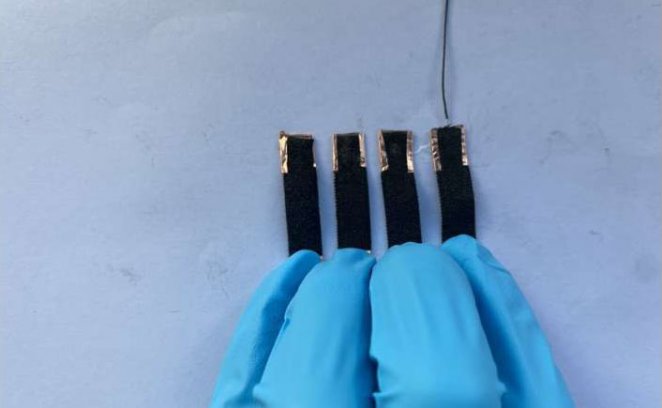
Teijin launches new ‘sensing wear’ range
Unlike current wearable devices, fabric does not depend on an external power source or need frequent recharging.

20th August 2024
Innovation in Textiles
|
Canada
University of Waterloo researchers in Canada have developed a smart fabric based on MXene and conductive polymers that can efficiently convert body heat and solar energy into electricity.
MXene is a recently-developed graphene-like two-dimensional transition metal carbon compound obtained by selectively etching specific atomic layers from multiple layered nitrogen compounds.
“We have developed a fabric with multi-functional sensing capabilities and self-powering potential,” says Yuning Li, Professor of Chemical Engineering and director of Waterloo’s Printable Electronic Materials Lab. “This innovation brings us closer to practical applications for smart fabrics.”
The smart fabric is said to be more stable, durable, and cost-effective than others currently available on the market and unlike current wearable devices, does not depend on an external power source or need frequent recharging.
Different sensors monitoring temperature, stress, chemical composition and more can be integrated into the material and one promising application is in smart face masks that can track breath temperature and rate and detect chemicals in the breath, to help identify viruses, lung cancer and other conditions.
“AI technology is evolving rapidly, offering sophisticated signal analysis for health monitoring, food and pharmaceutical storage, environmental monitoring and more,” says Li. “However, this progress relies on extensive data collection, which conventional sensors, often bulky, heavy and costly, cannot meet. Printed sensors, including those embedded in smart fabrics, are ideal for continuous data collection and monitoring. This new smart fabric is a step forward in making these applications practical.”
The next phase of research will focus on further enhancing the fabric’s performance and integrating it with electronic components in collaboration with electrical and computer engineers. A future development will include a smartphone app to track and transmit data from the fabric to healthcare professionals, enabling real-time, non-invasive health monitoring and everyday use.
A study on the work has been published in the Journal of Materials Science & Technology.

Business intelligence for the fibre, textiles and apparel industries: technologies, innovations, markets, investments, trade policy, sourcing, strategy...
Find out more